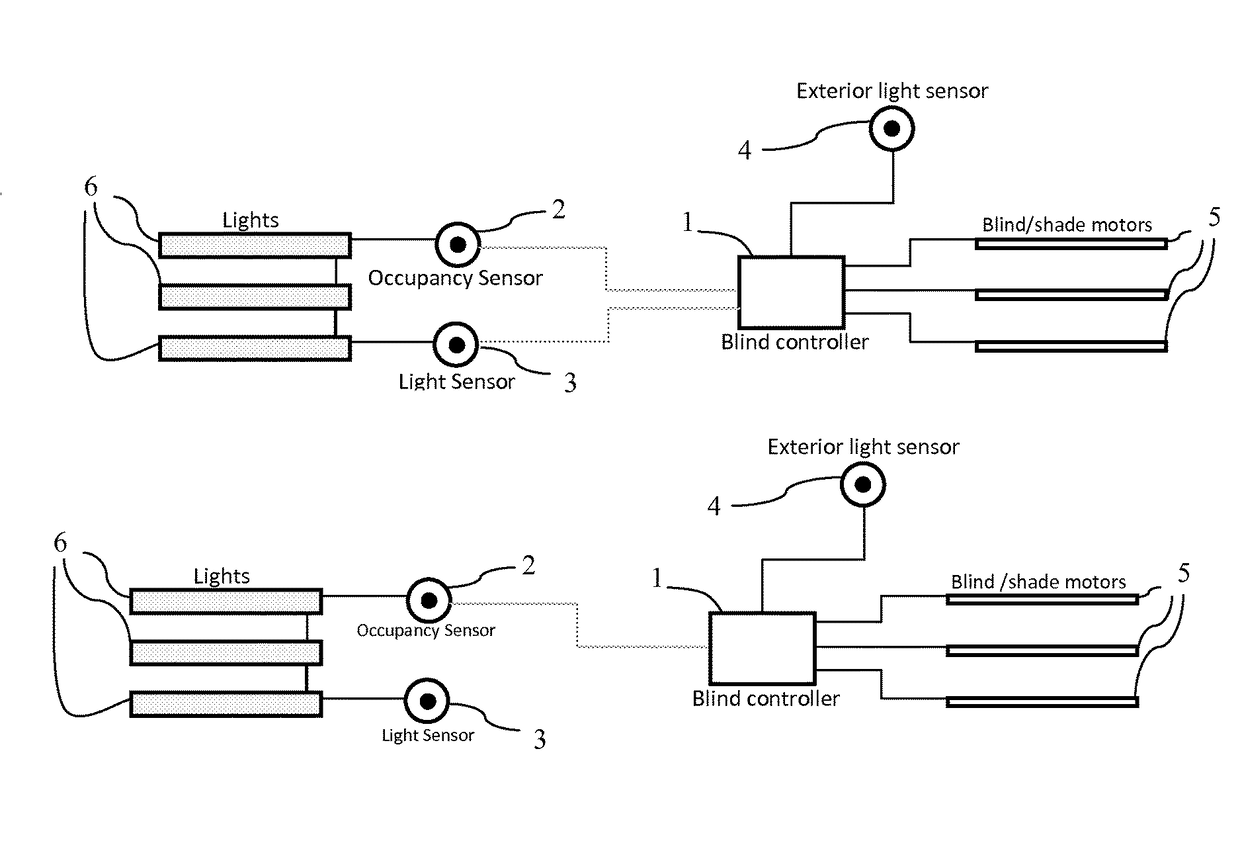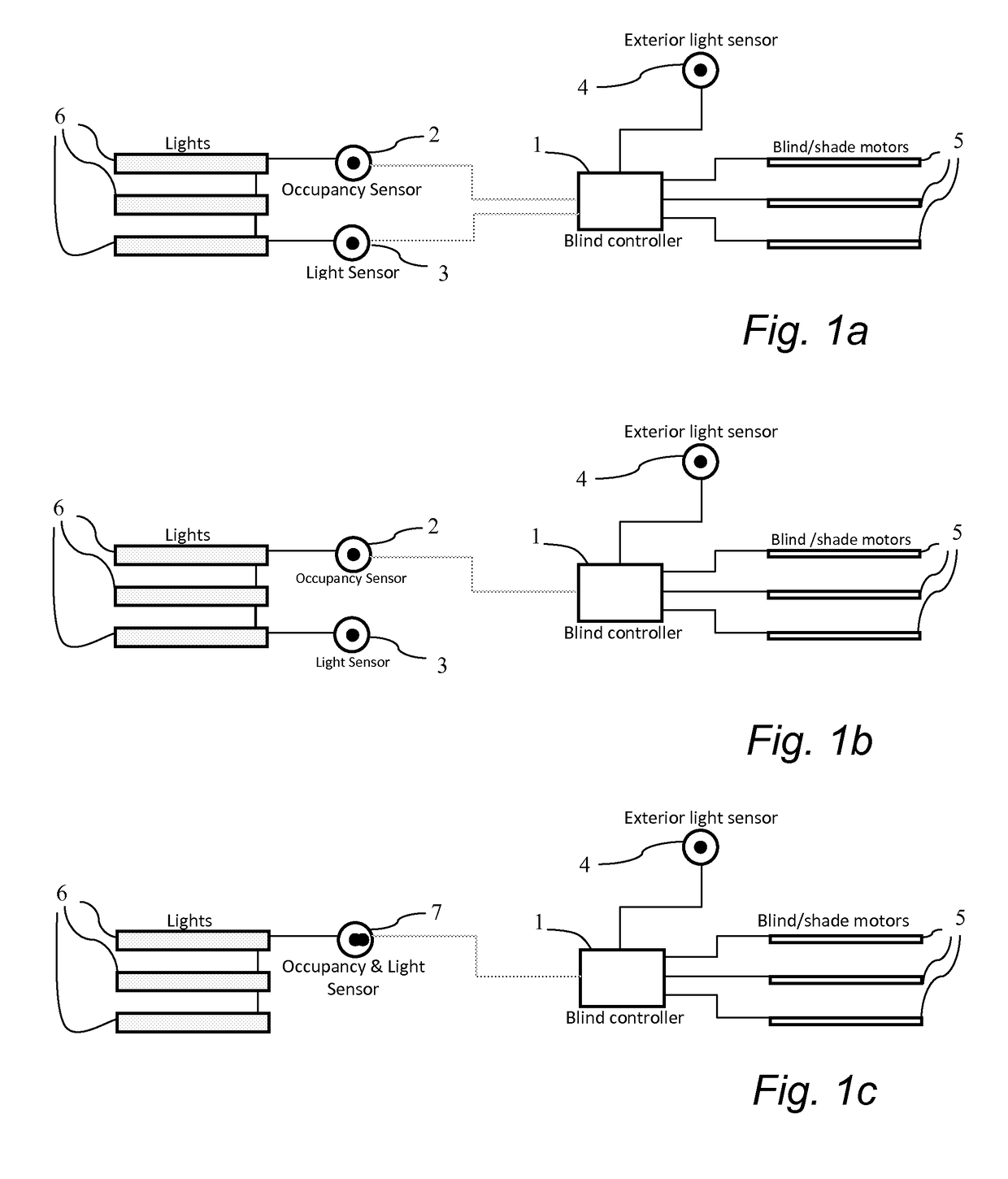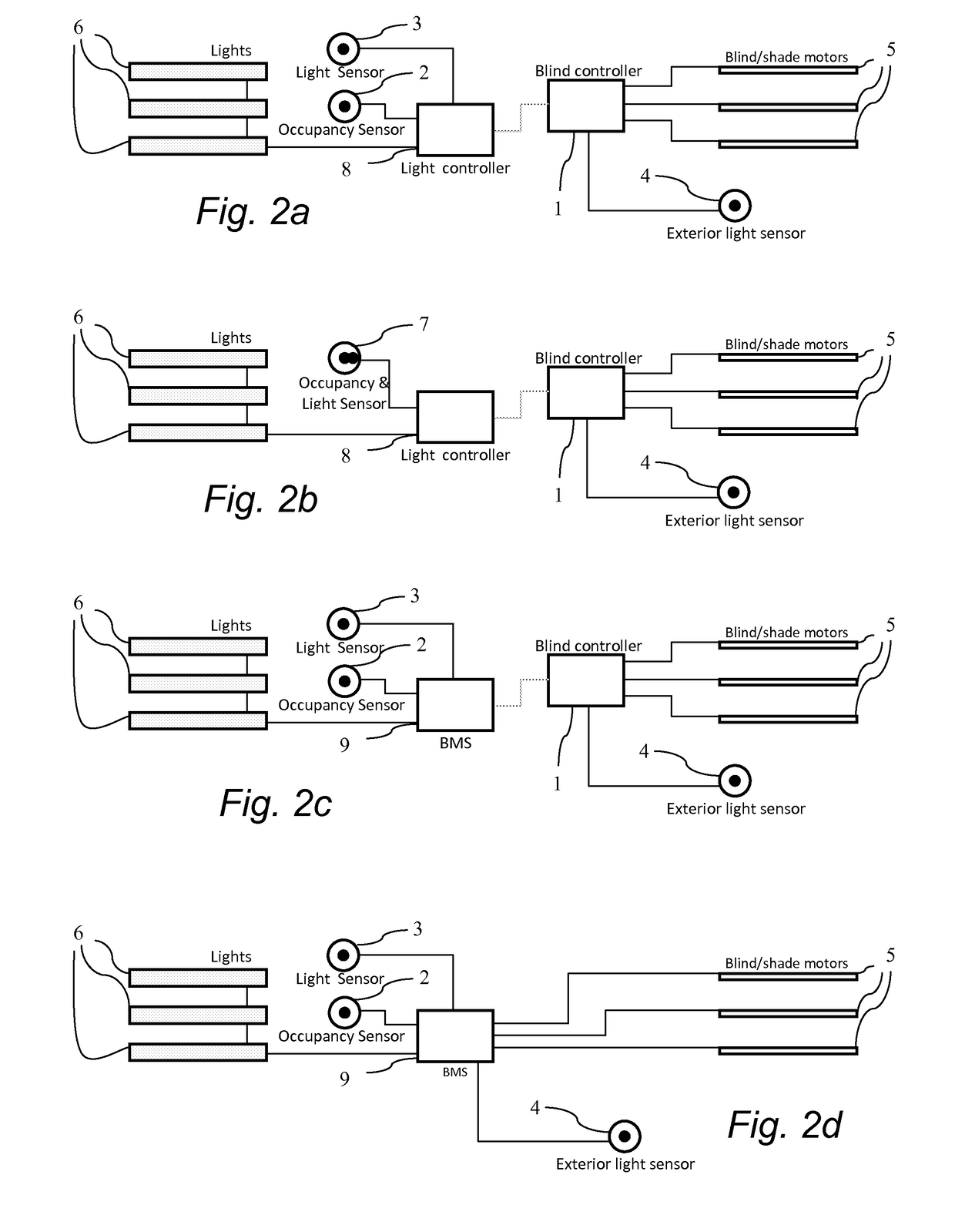Auto-calibration of blinds systems in buildings
a blinds system and building technology, applied in sustainable buildings, doors/windows, door/window protective devices, etc., can solve the problems of system integration that is not sophisticated, mechanical parts that are subject to wear, and considerable energy reduction
- Summary
- Abstract
- Description
- Claims
- Application Information
AI Technical Summary
Benefits of technology
Problems solved by technology
Method used
Image
Examples
Embodiment Construction
[0040]The occupancy sensor 2 and lighting sensor 3 information is integrated with the blinds control system. The occupancy and lighting sensors can have a direct link to the blinds system as shown in FIG. 1a. Alternatively, only the occupancy 2 or light sensor 3 can be connected to the blinds system, porting the communication between the other sensor and the blinds system controller 1 and managing communication between itself and the blinds system, as shown in FIG. 1b. A third, and most easy, option is to use an integrated occupancy and lighting sensor 7 and connect it directly to the blinds system, as shown in FIG. 1c. All these three solutions require a specific connector on the sensors 2, 3, 7 and the blinds control system and an agreed communication protocol.
[0041]In case of a more advanced lighting system the occupancy information can be shared via a central lighting controller, or as part of a building management system (BMS) 9 as shown in FIG. 2a. In this case, existing netwo...
PUM
 Login to View More
Login to View More Abstract
Description
Claims
Application Information
 Login to View More
Login to View More - R&D
- Intellectual Property
- Life Sciences
- Materials
- Tech Scout
- Unparalleled Data Quality
- Higher Quality Content
- 60% Fewer Hallucinations
Browse by: Latest US Patents, China's latest patents, Technical Efficacy Thesaurus, Application Domain, Technology Topic, Popular Technical Reports.
© 2025 PatSnap. All rights reserved.Legal|Privacy policy|Modern Slavery Act Transparency Statement|Sitemap|About US| Contact US: help@patsnap.com



